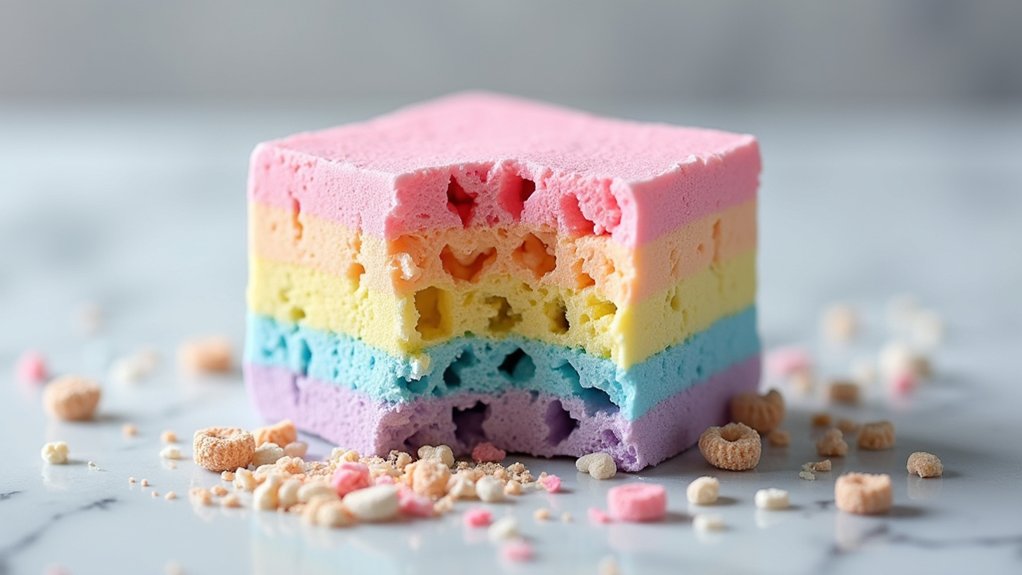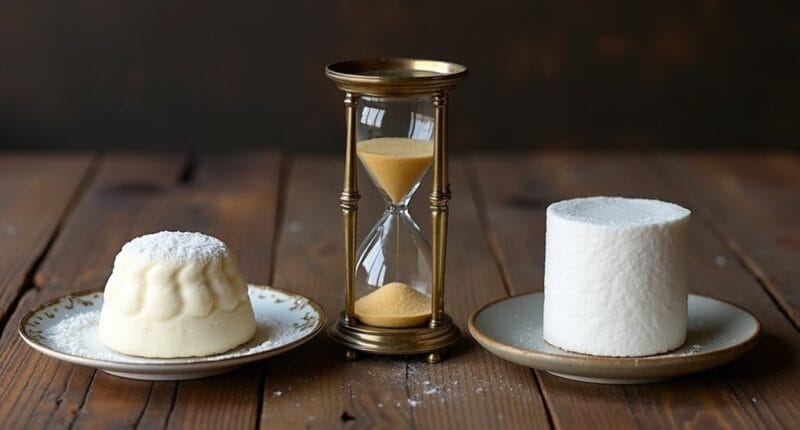Ancient Egyptians spent 27 hours crafting marshmallows from plant sap and honey, strictly for gods and royalty. Fast forward to modern times: a six-minute factory process pumps out fluffy white squares by the millions. Gone are the medicinal roots and exclusive status – replaced by gelatin, corn syrup, and mass appeal. From sacred remedy to casual campfire treat, marshmallows spark fierce debate about progress versus tradition. The sticky truth lies somewhere in between.

From humble herbal roots to fluffy sugar clouds, marshmallows have come a long way since their royal Egyptian beginnings. The ancient Egyptians weren’t messing around when they combined the sap of the Althaea officinalis plant with honey – this wasn’t your average sweet treat. No, this was strictly for gods and royalty. Alex Doumak revolutionized modern marshmallow production in 1948. Sorry, common folks.
But here’s where it gets interesting. These sticky concoctions weren’t just for satisfying sweet tooths. The Greeks and Romans used them to cure everything from toothaches to constipation. Talk about a versatile plant. By the Middle Ages, Europeans were still brewing up marshmallow root remedies, probably never dreaming that their medicinal plant would one day become an essential ingredient in s’mores.
Then came the French. Those culinary show-offs decided to transform marshmallow sap into something fancy called “Pâte de Guimauve.” The catch? It took 27 hours to make. That’s right – more than a full day of work for something that now takes six minutes to toast over a campfire until it’s perfectly golden brown (or accidentally burned to a crisp).
The game-changer was gelatin. When confectioners replaced the traditional marshmallow sap with gelatin, everything changed. Suddenly, mass production became possible. The Americans, never ones to miss out on a sugar-based opportunity, jumped right in. They started cranking out marshmallows like there was no tomorrow. The invention of the starch mogul system revolutionized marshmallow production in the late 1800s.
By the 20th century, marshmallows had found their way into everything. Moon Pies in 1917. S’mores in 1927 (thank you, Girl Scouts). And let’s not forget those iconic Peeps – because apparently regular marshmallows weren’t cute enough. The industrial revolution of candy was in full swing.
Today’s marshmallows are a far cry from their medicinal ancestors. They’re basically sugar, corn syrup, and gelatin whipped with air until they’re impossibly fluffy. No more marshy plant roots. No more 27-hour waiting periods. Just pure, pillowy convenience. The Egyptians would probably be horrified. Or impressed. Maybe both.





